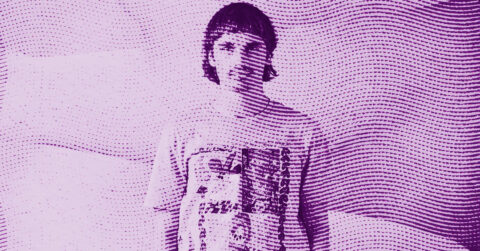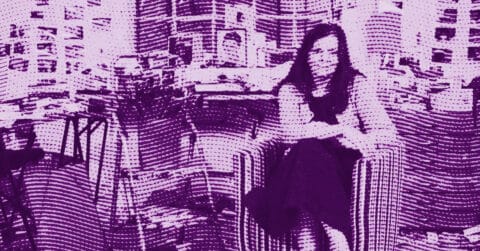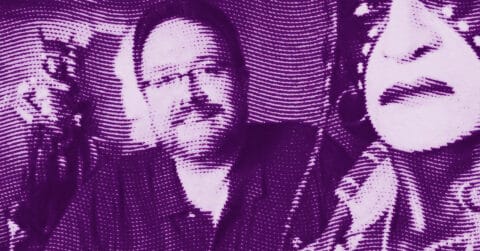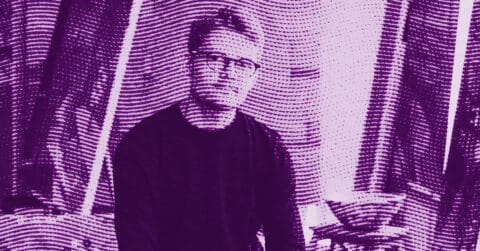Listen to me carefully, you bunch of snobs, if you think contemporary art is summed up as gilded frames hanging in sterile galleries, you are mistaken. Vik Muniz, this Brazilian born in 1961 in Sao Paulo, offers us a visual shock that we desperately needed. Yes, this man literally reinvents our relationship with images by transforming waste into Marat, chocolate into Medusa, and sugar into portraits of Caribbean children. His work, more than just a stylistic exercise, is a clinical dissection of our contemporary visual culture.
Muniz is the kind of artist who makes you traverse an unexplored territory between the original and the copy, between the image and its representation. He constantly plays with our perception, forcing us to look twice, three times, a hundred times at the same work. When you see his “Marat (Sebastiao)” from the “Pictures of Garbage” series from afar, you notice the famous painting by Jacques-Louis David. Come closer and you will discover an assembly of debris from Jardim Gramacho, one of the largest landfills in the world located near Rio de Janeiro. This is where Muniz worked with the catadores, these waste pickers who survive by recovering recyclable materials. This collaboration is not merely artistic; it is profoundly social, with the benefits reversed to these marginalized workers.
What I like about Muniz is this insistence on manipulating our visual perception, like a magician who would show us his tricks while continuing to amaze us. His method is transparent but his result remains magical. This paradox inevitably reminds me of the thought of Marcel Duchamp who declared: “It is the viewers who make the pictures” [1]. Duchamp, like Muniz, understood that art only exists in this ambiguous space between the object and the one who perceives it. The work is simply a trigger, a mechanism that activates our own experience. When Muniz reproduces “A Bar at the Folies-Bergere” by Manet with pieces of cut-out magazines, he does not simply copy an iconic image, he creates a new visual object that simultaneously contains the original and its reinterpretation. He forces us to recognize the process of constructing the image, while preserving its evocative power.
But be careful, do not be mistaken. Muniz is not a mere technical imitator. His art is not a matter of manual virtuosity, although he possesses it in abundance. No, his true genius lies in his ability to transform the meaning of the materials he uses. Take his “Sugar Children” series where he photographed children of workers in sugar cane plantations, then recreated their portraits with sugar. The final result is not just a pretty image, but a poignant commentary on how these workers literally extract the “sweetness” from their own lives to satisfy our Western consumption. The material becomes the message. The medium becomes the metaphor.
This approach makes me think of Roland Genette’s literary theory on transtextuality [2]. Genette explores how texts are constructed in reference to other pre-existing texts, creating levels of meaning that go beyond mere content. Muniz does exactly that with images. Each work is both a reference to art history and a new creation that transcends its original. Take his “Pictures of Junk” series where he reproduces classical masterpieces with waste. This is not just a simple exercise in quotation, but a complete transformation that adds layers of meaning. When he reinterprets “Leda and the Swan” by Leonardo da Vinci using debris, he is not merely recycling a famous image, he is questioning our relationship with mythology, beauty, and our own cultural heritage. The abandoned Barbie that marks the decor at the side of Leda’s leg is not just an amusing detail, but a commentary on how our contemporary myths coat the ancient ones.
What Muniz understands perfectly is that photography has never been a simple recording of reality. Since its invention, it has been manipulated, constructed, staged. In 2023, when 73 natural history museums from around the world collaborated to inventory 1.1 billion objects, they simply acknowledged what Muniz has been demonstrating for decades: that our world is made up of objects that acquire their value through the way we perceive, classify, and preserve them. His “Museum of Ashes” series, created after the devastating fire at the National Museum of Brazil in 2018, is perhaps his most moving work. By using the ashes of the destroyed objects to recreate their images, Muniz transforms loss into memory, absence into presence.
Muniz’s experience in the immense Jardim Gramacho landfill is revealing. He discovered there what he calls “an archeology of material desires,” layers upon layers of once precious objects, now reduced to unrecognizable fragments. In this material purgatory, he found a fundamental truth about our consumer culture: we are defined as much by what we throw away as by what we keep. This theme resonates deeply with the thought of sociologist Zygmunt Bauman on “liquid modernity” [3], where nothing is designed to last, where identities, relationships, and possessions are constantly replaced, updated, discarded. Muniz visualizes this theory by transforming these discards into art.
Muniz’s cultural critique is sharp but never cynical. There is an evident joy in his method, an almost childlike pleasure in playing with materials, experimenting, deceiving the eye. There is something profoundly democratic in his approach. By using everyday materials like chocolate, ketchup, thread, dust, he desacralizes art while elevating the ordinary. Anyone can understand and appreciate an image made of peanut butter and jelly. But this accessibility hides a remarkable intellectual sophistication.
Trained in the repressive context of 1970s Brazil, Muniz learned to communicate through metaphors, to hide messages in seemingly innocent images. This experience certainly influenced his artistic practice. As he himself declared: “I prefer that images be like love songs, that they be easy, you know, so that you open up to them” [4]. This accessible approach hides considerable complexity, a deep reflection on the nature of representation itself.
What truly distinguishes Muniz from so many other contemporary artists is his refusal of pure abstraction. He remains resolutely attached to the recognizable image, to the power of familiar iconography. In an art world often dominated by the incomprehensible and the esoteric, this visual clarity is refreshing. But do not be mistaken, his readability is not a concession to ease. It is a deliberate choice, a strategy to engage us in a deeper conversation about how images shape our understanding of the world.
When Muniz manipulates physical objects to create his works, he reminds us that all images are constructions. Even the most “direct” photograph involves choices, framings, manipulations. By making this process explicit, he invites us to become more critical, more aware viewers. It is a political act in a world saturated with images that try to pass for reality.
Metamorphosis is at the heart of Muniz’s practice. No wonder he cites Ovid’s Metamorphoses as his favorite book, with its opening “I intend to speak of forms changed into new bodies” [5]. Each of Muniz’s works is a metamorphosis, of materials into images, of images into ideas. This continual transformation reflects our own experience in a world of perpetual change.
And yet, despite all this conceptual complexity, Muniz’s art remains deeply human. His collaborations with street children in Brazil, with the workers of Jardim Gramacho, testify to a sincere commitment to marginalized communities. He uses his art not only to comment on the world but to actively change it, to create connections, to transform lives. The children who participated in his “Invisible Objects” project learned to visualize their desires, to create objects that represent their aspirations, and then to internalize them in such a way that no one can take them away. It is a powerful lesson in empowerment through imagination.
There is a productive contradiction in Muniz’s work. His photographs are often documents of ephemeral works, chocolate drawings that melt, arrangements of waste that disperse, sugar portraits that dissolve. The photographic image thus becomes not a simple recording, but the only testimony of a moment of creation that no longer exists. This tension between permanence and impermanence, between the object and its representation, is at the heart of his practice. It reminds us that all art exists in this intermediary space between creation and perception, between intention and interpretation.
What makes Vik Muniz so extraordinary is not just his technical virtuosity or his conceptual ingenuity. It is his ability to make us see the world differently, to transform our perception not only of art but of the everyday reality that surrounds us. After seeing his work, you will never look at a pile of waste, a bowl of chocolate syrup, or a handful of sugar the same way again. And is that not the true power of art, to make us see the extraordinary in the ordinary, the sublime in the banal, the beauty in the unexpected?
In a world where contemporary art often seems disconnected from everyday experience, Muniz offers us an alternative vision: an art that engages, that questions, that transforms. An art that is not content to be “about” something, but that truly embodies its ideas in its very materiality. An art that does not leave us indifferent, but that forces us to rethink our own relationship with the images that surround us. An art, finally, that reminds us that the true alchemy is not to transform lead into gold, but to transform our perception of the world.
- Marcel Duchamp, in a conference at the Museum of Modern Art, New York, 1961.
- Gerard Genette, “Palimpsests: Literature in the Second Degree”, Editions du Seuil, 1982.
- Zygmunt Bauman, “Liquid Life”, Editions du Rouergue, 2006.
- Vik Muniz, in an interview with Mark Magill for BOMB Magazine, October 1, 2000.
- Ovid, “Metamorphoses”, Book I, verses 1-2, translation by Georges Lafaye.
















